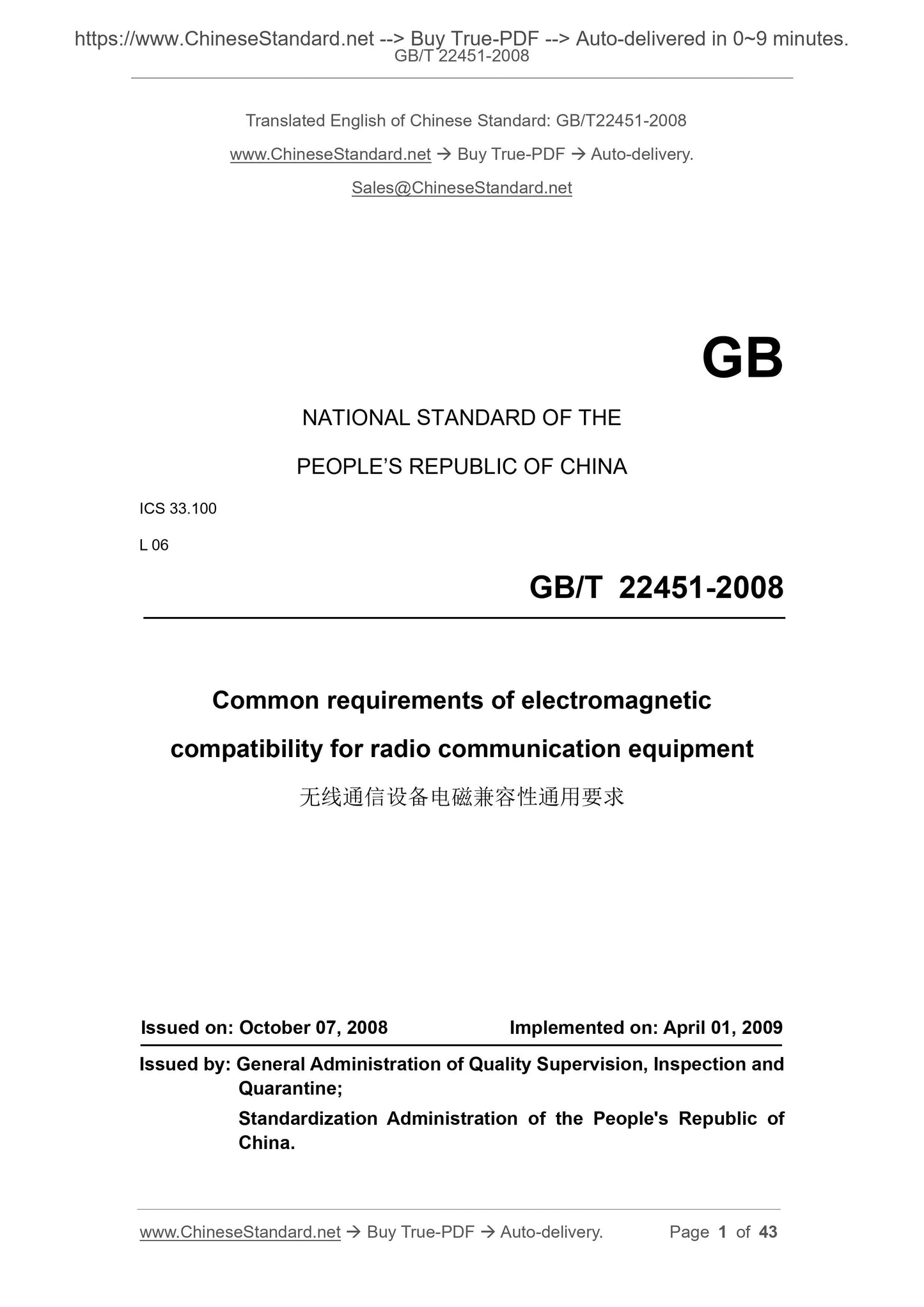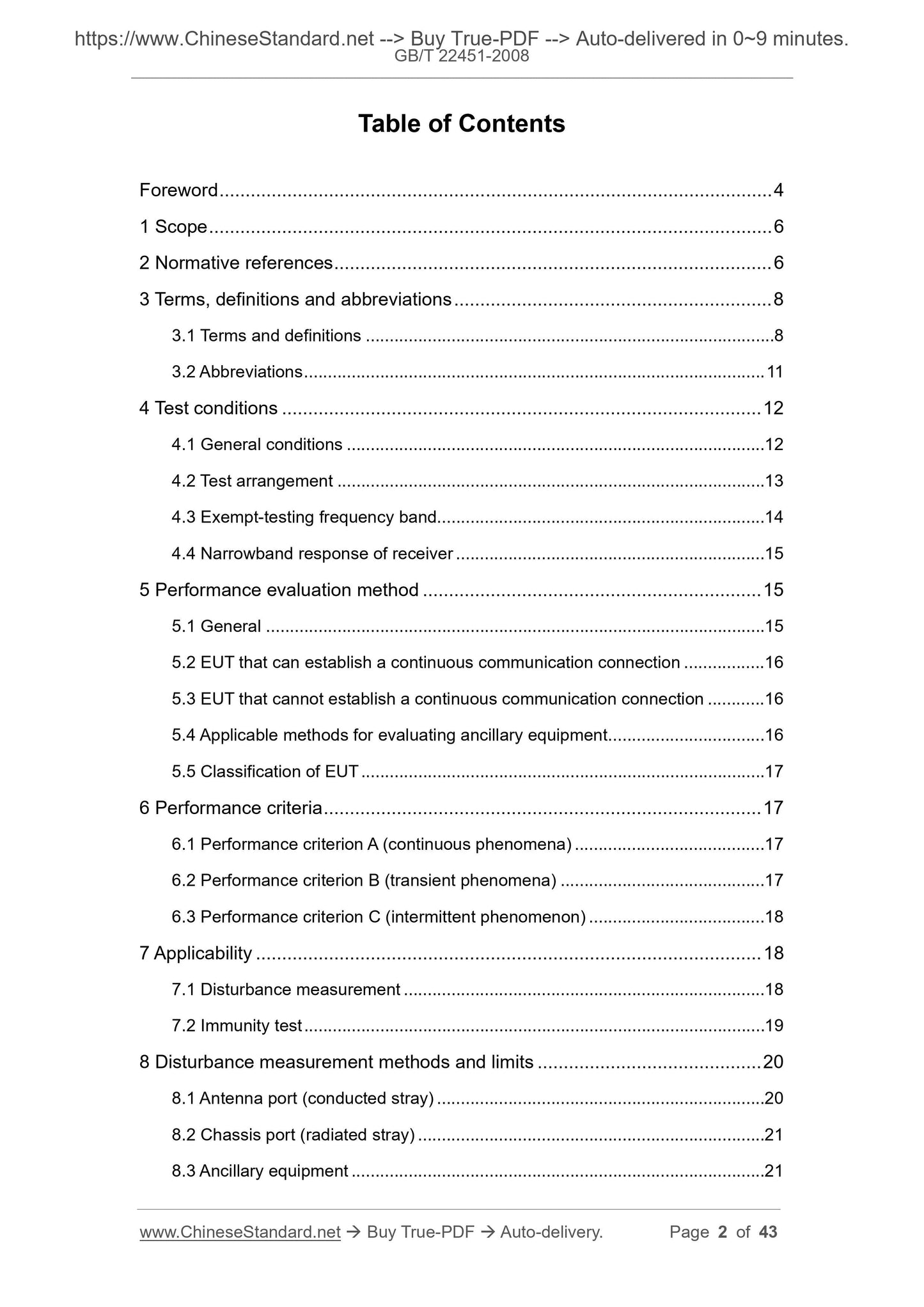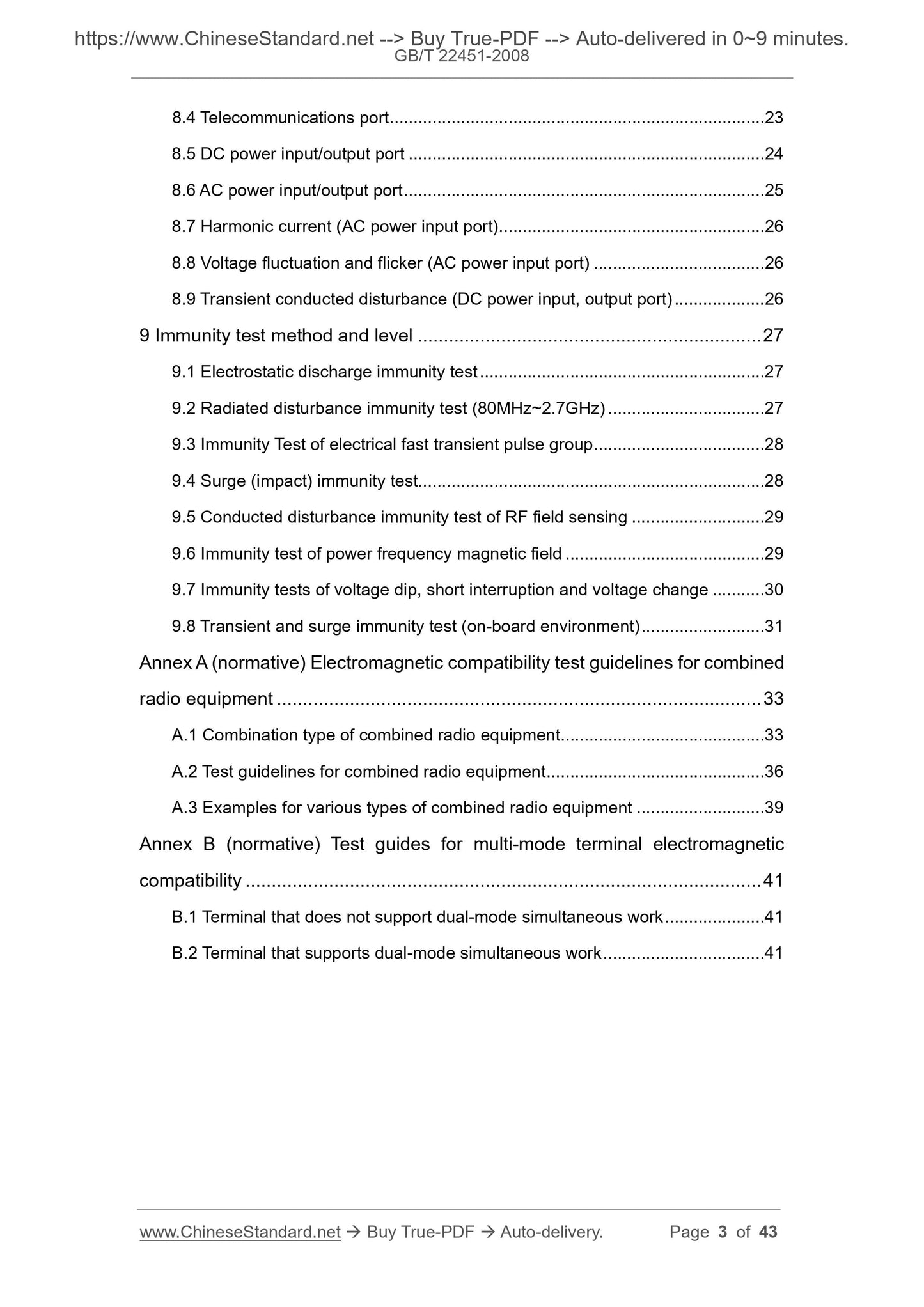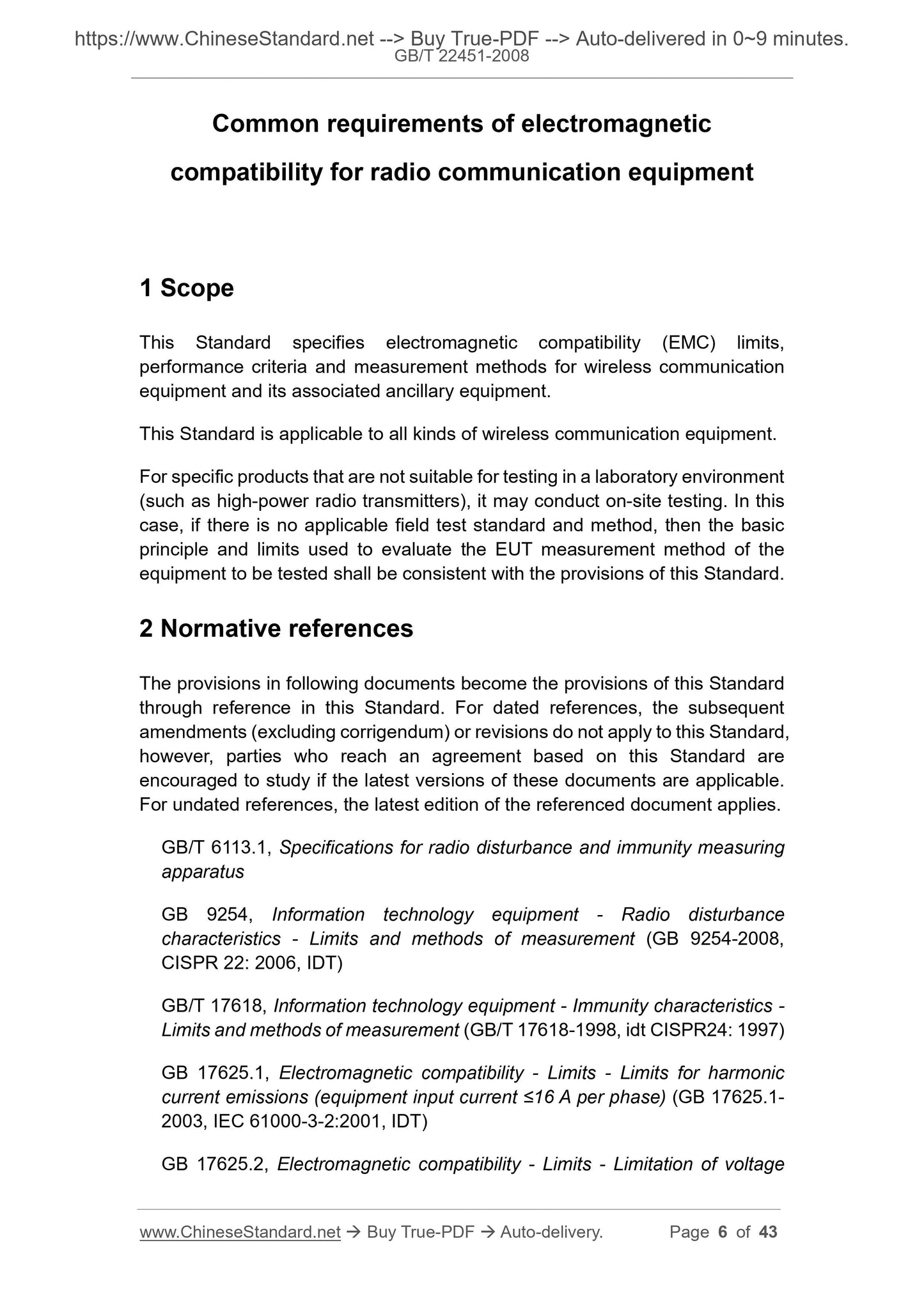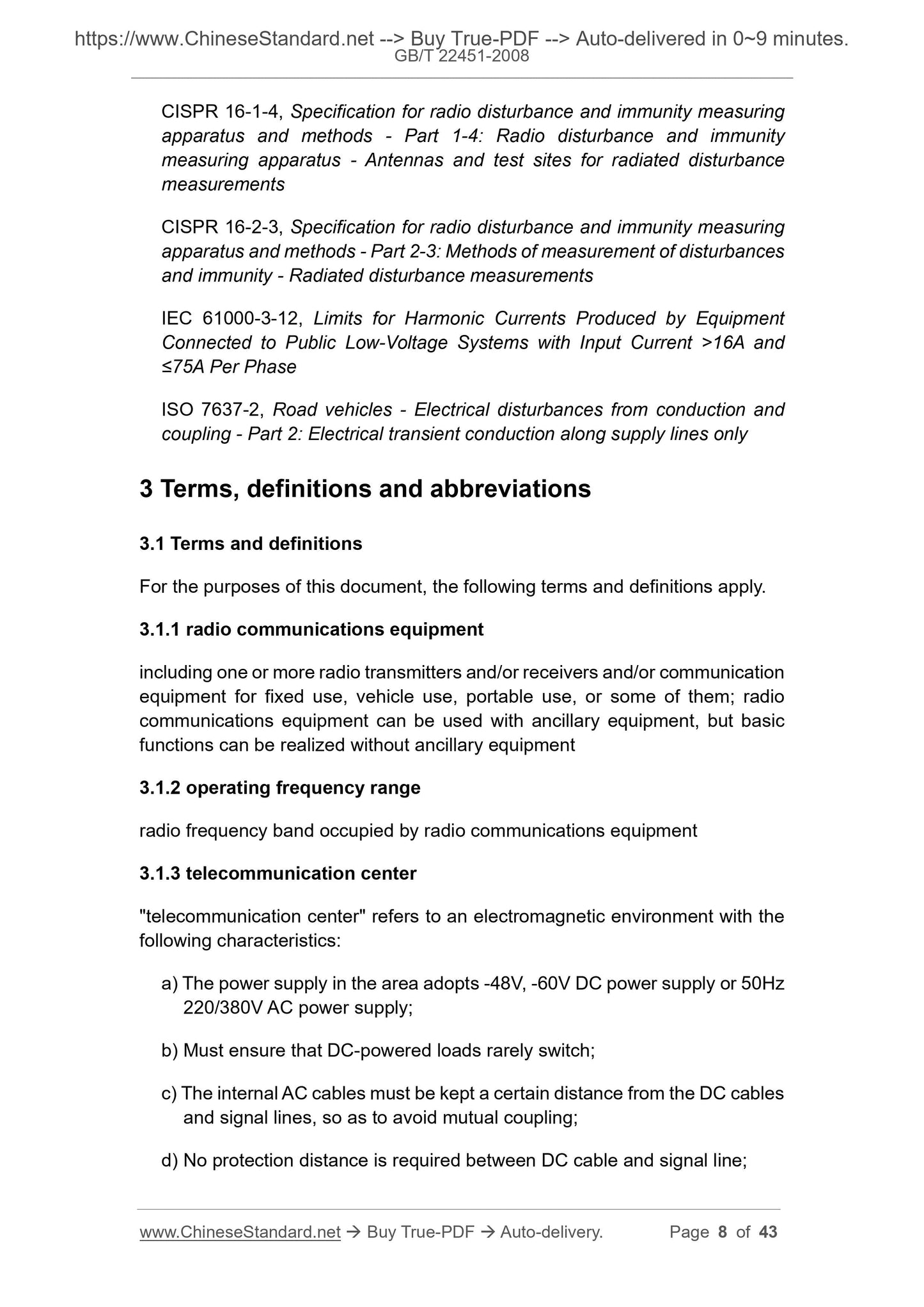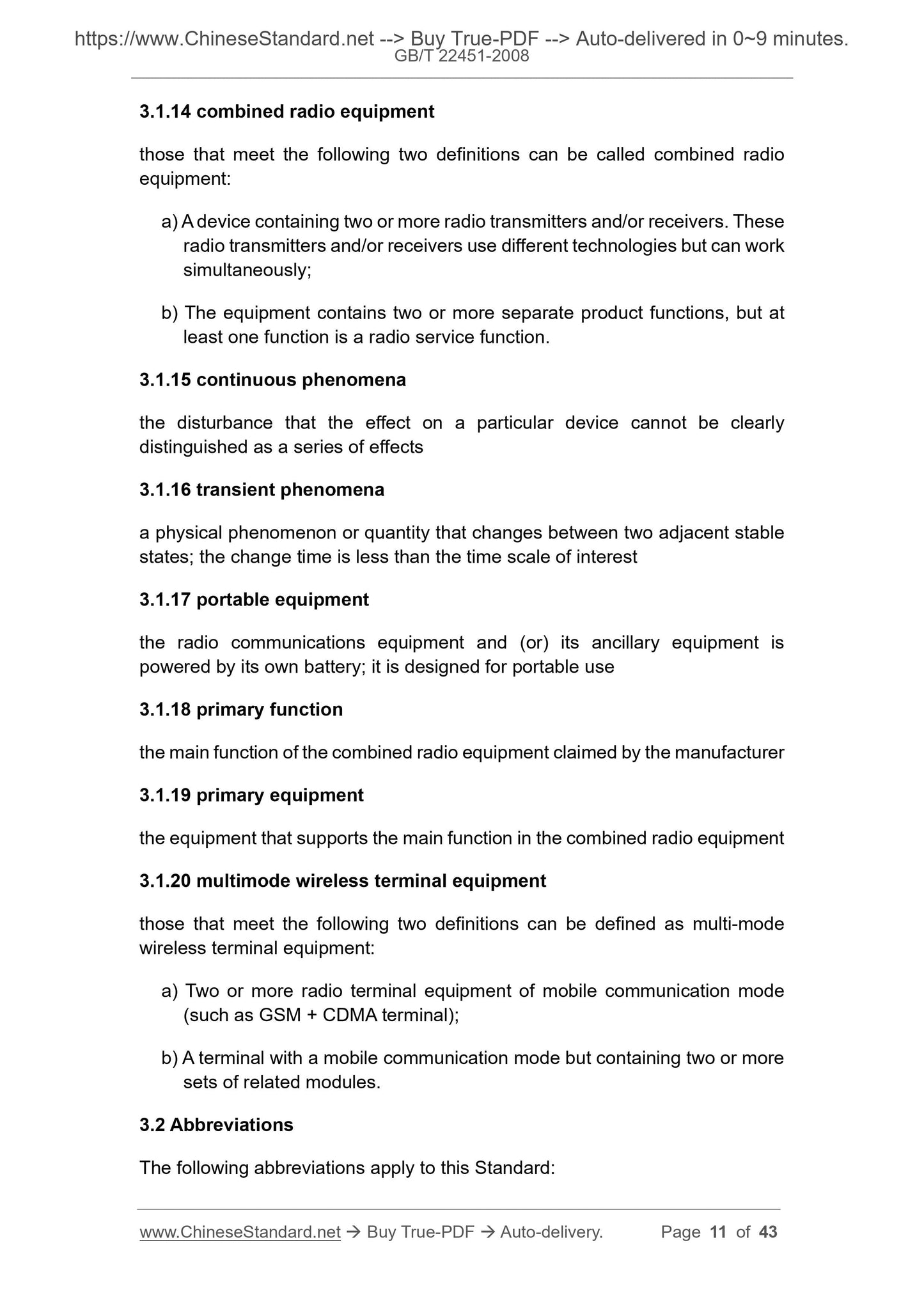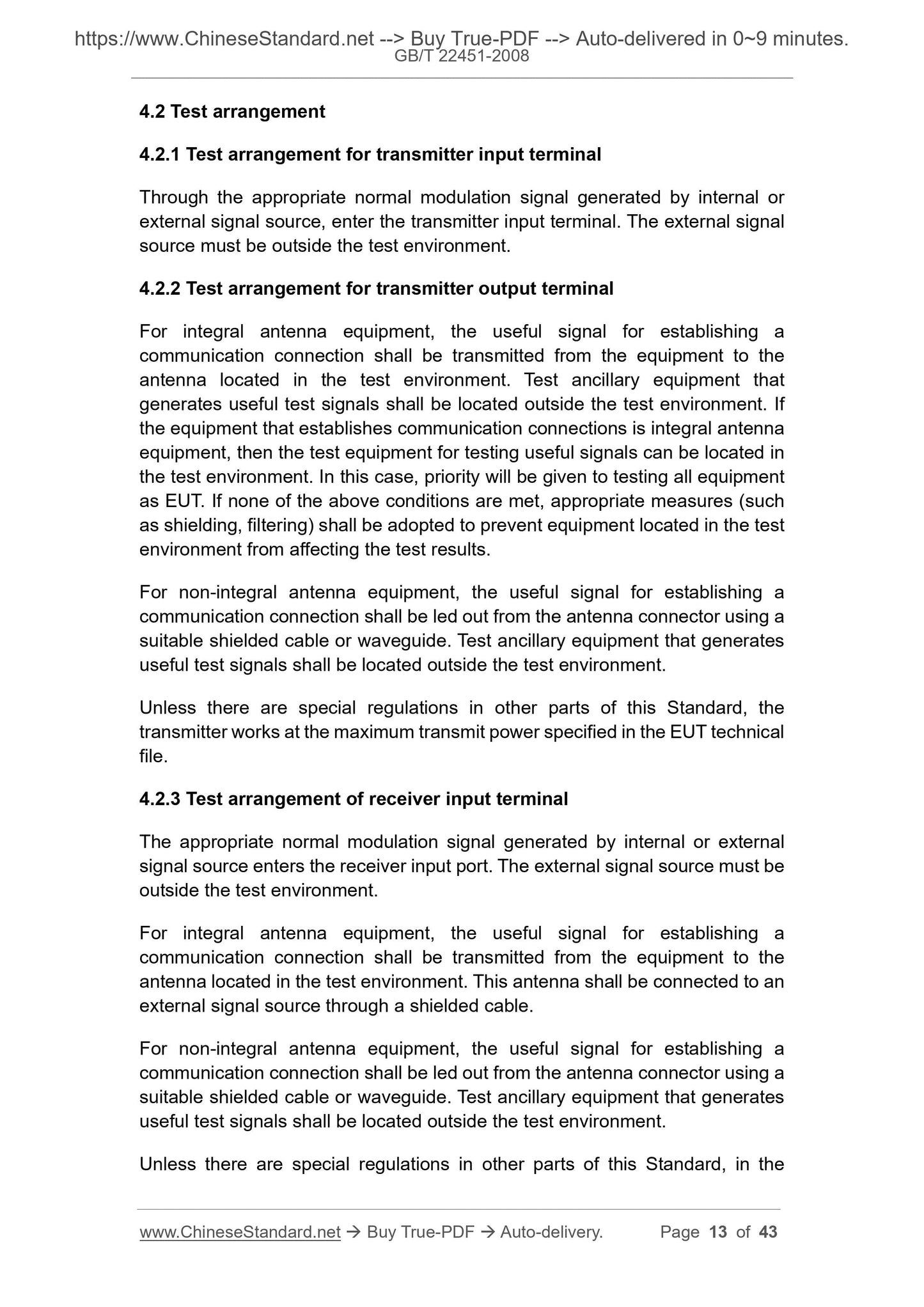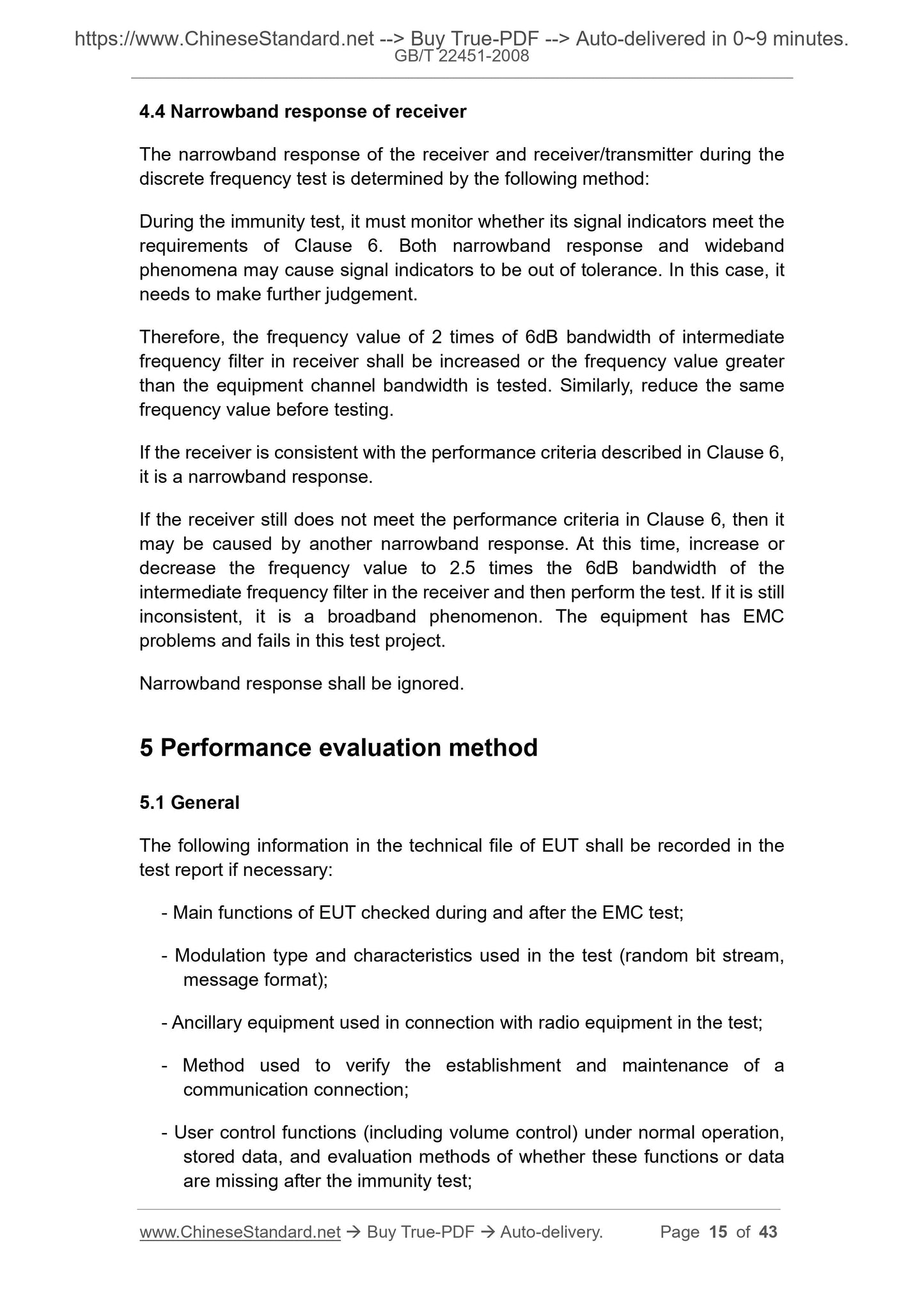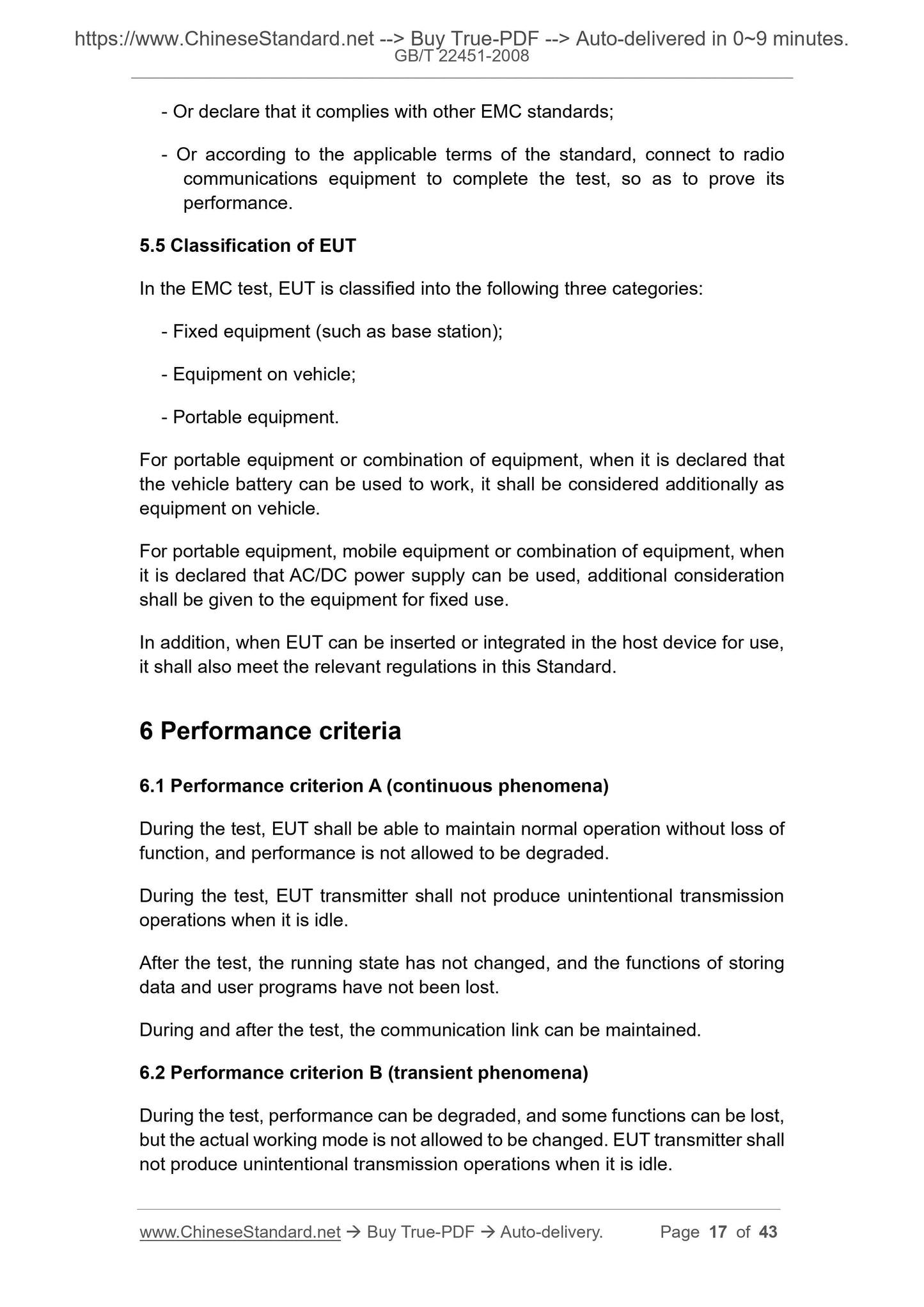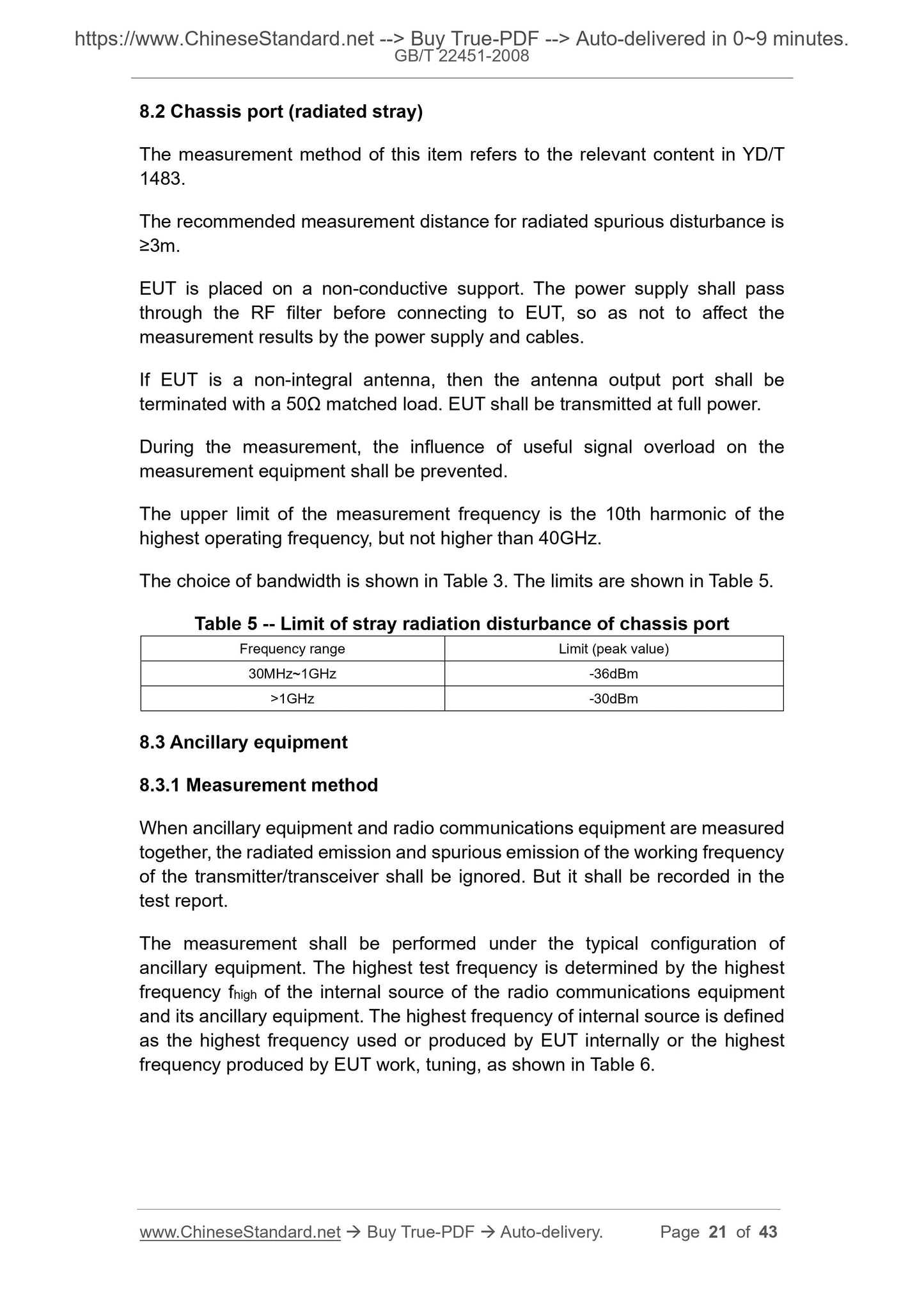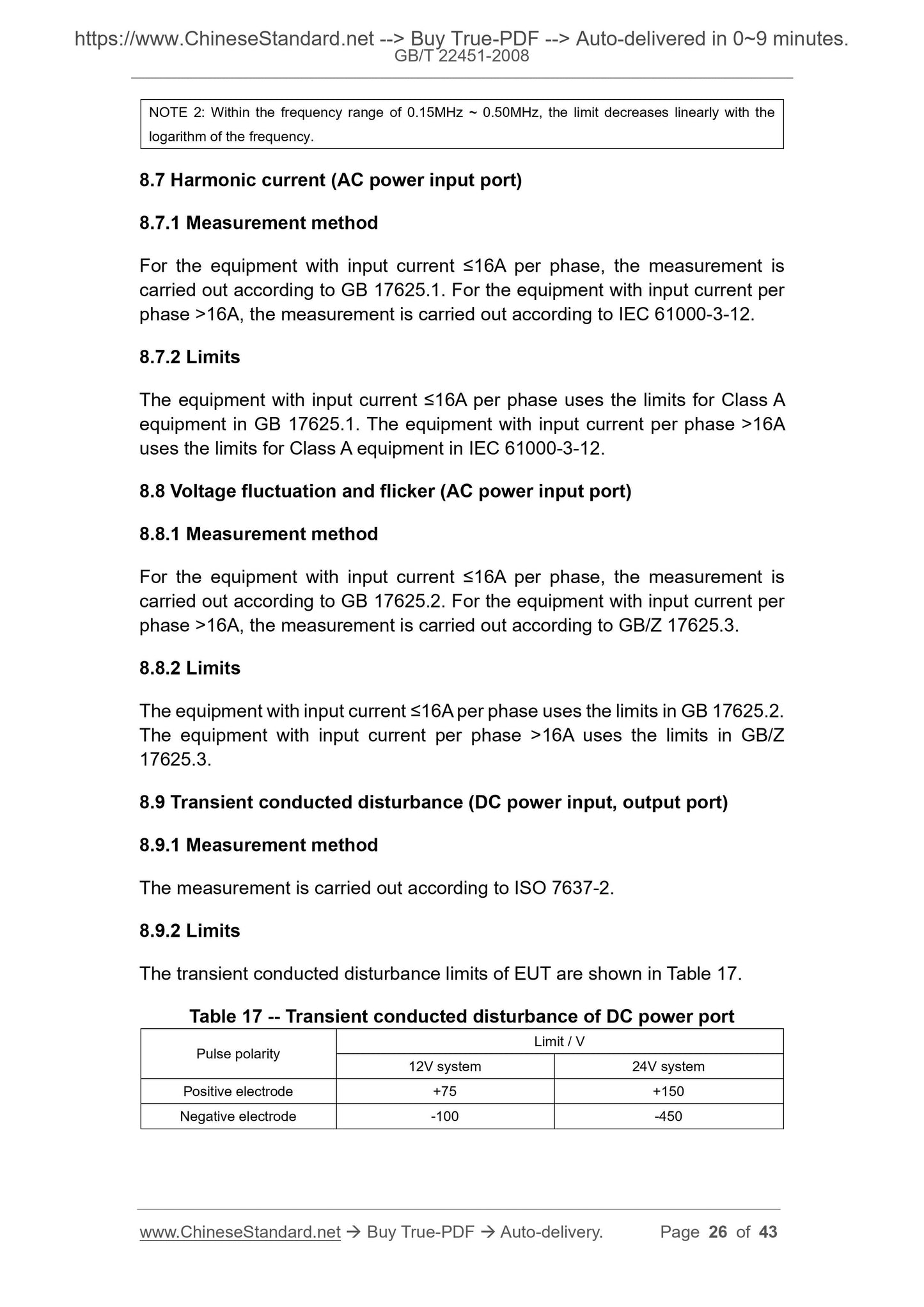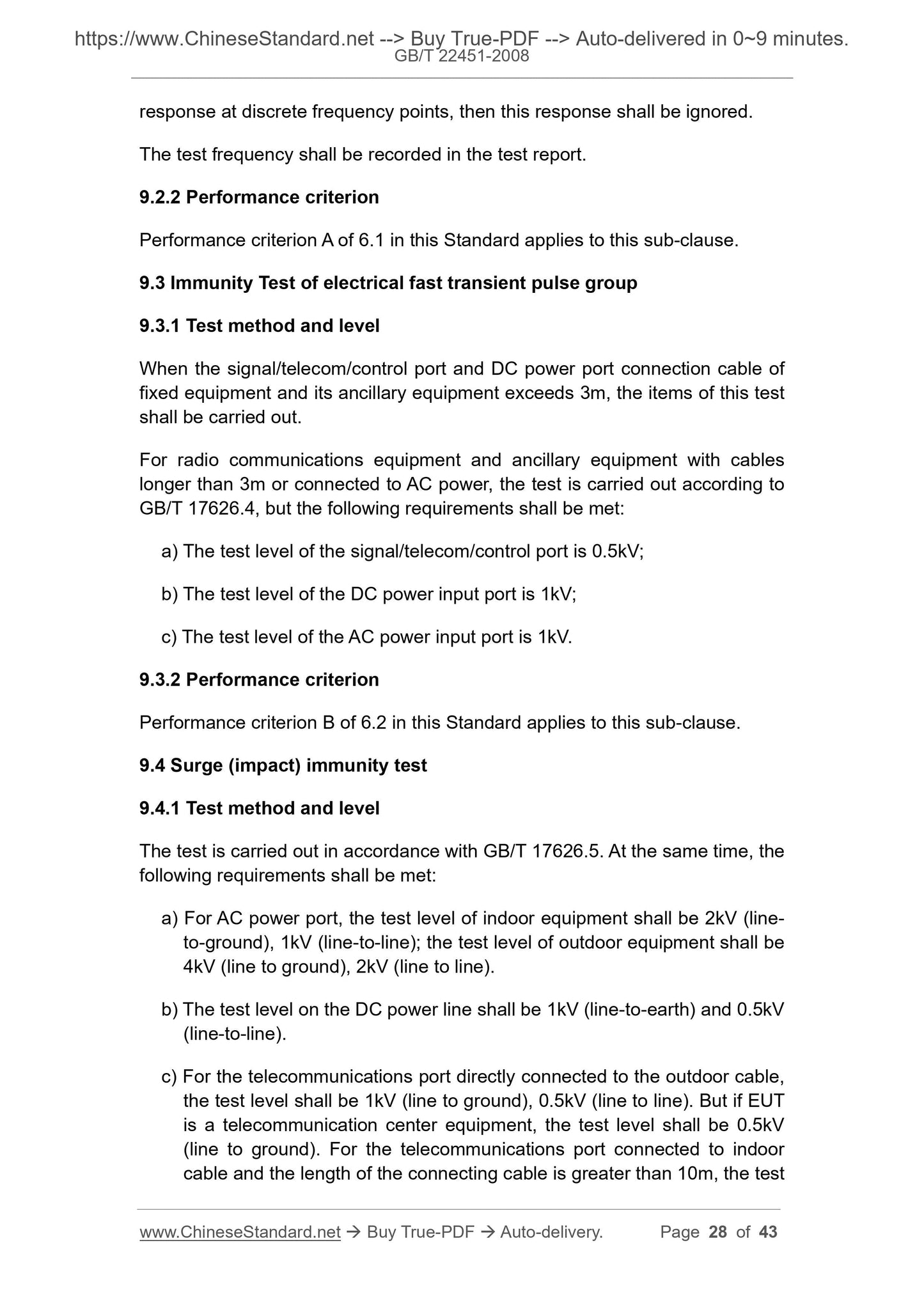1
/
of
12
www.ChineseStandard.us -- Field Test Asia Pte. Ltd.
GB/T 22451-2008 English PDF (GB/T22451-2008)
GB/T 22451-2008 English PDF (GB/T22451-2008)
Regular price
$460.00
Regular price
Sale price
$460.00
Unit price
/
per
Shipping calculated at checkout.
Couldn't load pickup availability
GB/T 22451-2008: Common requirements of electromagnetic compatibility for radio communication equipment
Delivery: 9 seconds. Download (and Email) true-PDF + Invoice.Get Quotation: Click GB/T 22451-2008 (Self-service in 1-minute)
Newer / historical versions: GB/T 22451-2008
Preview True-PDF
Scope
This Standard specifies electromagnetic compatibility (EMC) limits,performance criteria and measurement methods for wireless communication
equipment and its associated ancillary equipment.
This Standard is applicable to all kinds of wireless communication equipment.
For specific products that are not suitable for testing in a laboratory environment
(such as high-power radio transmitters), it may conduct on-site testing. In this
case, if there is no applicable field test standard and method, then the basic
principle and limits used to evaluate the EUT measurement method of the
equipment to be tested shall be consistent with the provisions of this Standard.
Basic Data
| Standard ID | GB/T 22451-2008 (GB/T22451-2008) |
| Description (Translated English) | Common requirements of electromagnetic compatibility for radio communication equipment |
| Sector / Industry | National Standard (Recommended) |
| Classification of Chinese Standard | L06 |
| Classification of International Standard | 33.100 |
| Word Count Estimation | 29,290 |
| Date of Issue | 2008-10-07 |
| Date of Implementation | 2009-04-01 |
| Quoted Standard | GB/T 6113.1 |
| Regulation (derived from) | Announcement of Newly Approved National Standards No. 17 of 2008 (No. 130 overall) |
| Issuing agency(ies) | General Administration of Quality Supervision, Inspection and Quarantine of the People's Republic of China, Standardization Administration of the People's Republic of China |
| Summary | This standard specifies the wireless communication device and its associated auxiliary equipment, electromagnetic compatibility limits, performance criteria and measurement methods. This standard applies to all types of wireless communication devices. |
Share
